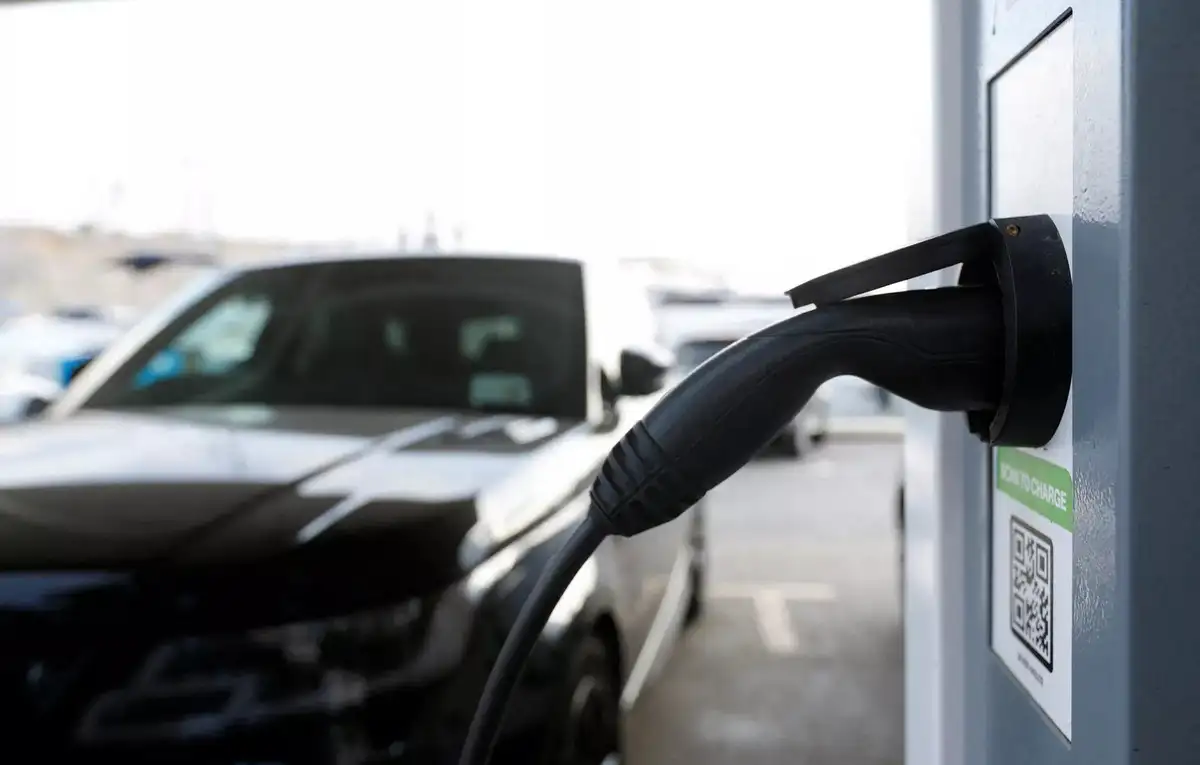India’s National Electric Mobility Plan (NEMP) and EV Expansion (2024–2025)
India’s transition to electric mobility has gained unprecedented momentum in 2024–2025, driven by an updated National Electric Mobility Plan (NEMP) and robust government policies aimed at enhancing EV adoption, strengthening charging infrastructure, and securing battery supply chains. The plan reflects India's ambition to emerge as a global EV manufacturing hub while addressing critical challenges such as energy security, climate change, and technological self-reliance.
Background and Strategic Context
- Launch and Evolution of the NEMP
The National Electric Mobility Plan (NEMP) was first introduced in 2013 with a 10-year horizon, aiming to:
- Promote electric vehicle adoption.
- Reduce oil dependency and environmental pollution.
- Establish a sustainable EV ecosystem.
- Updated NEMP (2024–2030) – Strategic Focus
The updated plan was approved by the Cabinet in February 2024 with enhanced targets and broader policy coverage, focusing on:
- Electrification of public and private transport
- Establishing a localized supply chain for EV components and batteries
- Strengthening EV charging infrastructure
- Supporting innovation in battery technology and sustainable mobility
- Reducing greenhouse gas emissions through cleaner transportation
Key Policy Objectives and Targets of NEMP (2024–2025)
| Target Area | Goal (By 2030) | Progress (By 2025) | Policy Instrument |
| EV Market Penetration | 30% of total vehicle sales | 18% achieved | FAME III subsidies, tax benefits |
| Two-Wheelers | 80% EV market share | 55% achieved | Direct subsidies, GST waiver |
| Three-Wheelers | 40% EV market share | 30% achieved | Financing support, registration fee waiver |
| Passenger Cars | 25% EV market share | 12% achieved | PLI for EV manufacturing |
| Electric Buses | 150,000 on-road buses | 40,000 deployed | State government subsidies |
| Battery Manufacturing Capacity | 100 GWh | 30 GWh | PLI Scheme for Advanced Battery Storage |
| Public Charging Infrastructure | 1.5 million charging points | 400,000 installed | NHAI and private partnership |
| Reduction in Oil Imports | 25% reduction in oil dependency | 8% reduction | EV adoption and biofuel integration |
| CO₂ Emission Reduction | 50 million tons annually | 15 million tons | Green energy integration |
Key Policy and Regulatory Framework (2024–2025)
- FAME III (Faster Adoption and Manufacturing of Hybrid and Electric
Vehicles)
- Announced in March 2024 with a total budget of ₹20,000 crore ($2.4 billion).
- Increased financial incentives for:
- Electric two-wheelers – Up to ₹25,000 per unit.
- Electric three-wheelers – Up to ₹50,000 per unit.
- Electric passenger cars – Up to ₹1.5 lakh per unit.
- Electric buses – Up to ₹30 lakh per unit.
- Expanded incentives for:
- Electric tractors and commercial vehicles.
- Battery swapping and leasing models.
- Retrofitting of internal combustion vehicles into EVs.
- Production-Linked Incentive (PLI) Scheme for Battery
Manufacturing
- Budget: ₹18,100 crore ($2.2 billion).
- Target: 100 GWh production capacity by 2030.
- Status (by 2025):
- 30 GWh operational capacity established
- Tata, Amara Raja, and Exide setting up large-scale lithium-ion battery plants
- Focus on:
- Lithium-ion batteries
- Sodium-ion batteries
- Solid-state batteries
- State-Level EV Policies (2024–2025)
- E-Bus Fleet Expansion
- Under FAME III, India aims to deploy 150,000 electric buses by 2030.
- By Q2 2025:
40,000 electric buses operational nationwide.
Major Contracts:
- Tata Motors – 5,000 units
- Ashok Leyland – 3,500 units
- JBM Auto – 2,000 units
- EV Charging Infrastructure Expansion
- Battery Recycling and Circular Economy
- Guidelines for battery recycling and disposal issued in April 2024.
- Focus on:
- Recovery of lithium, cobalt, and nickel.
- Closed-loop recycling for sustainable battery use.
- Incentives for recycling companies.
| Target Area | Goal (By 2030) | Progress (By 2025) | Policy Instrument |
| EV Market Penetration | 30% of total vehicle sales | 18% achieved | FAME III subsidies, tax benefits |
| Two-Wheelers | 80% EV market share | 55% achieved | Direct subsidies, GST waiver |
| Three-Wheelers | 40% EV market share | 30% achieved | Financing support, registration fee waiver |
| Passenger Cars | 25% EV market share | 12% achieved | PLI for EV manufacturing |
| Electric Buses | 150,000 on-road buses | 40,000 deployed | State government subsidies |
| Battery Manufacturing Capacity | 100 GWh | 30 GWh | PLI Scheme for Advanced Battery Storage |
| Public Charging Infrastructure | 1.5 million charging points | 400,000 installed | NHAI and private partnership |
| Reduction in Oil Imports | 25% reduction in oil dependency | 8% reduction | EV adoption and biofuel integration |
| CO₂ Emission Reduction | 50 million tons annually | 15 million tons | Green energy integration |
| Initiative | Goal | Progress |
| NHAI Highway Charging | Install charging stations every 30 km | 1,200 installed (2025) |
| Metro City Network | 50,000 public charging points in metro cities | 30,000 installed (2025) |
| Fast Charging Hubs | High-capacity charging hubs in Tier I & Tier II cities | 500 hubs operational |
| Home Charging Infrastructure | 500,000 home charging points | 250,000 installed |

Market Growth and Trends (2024–2025)
- Two-Wheelers
- Dominates Indian EV market – 55% of total EV sales.
- Top Players:
- Ola Electric
- TVS
- Hero MotoCorp
- Passenger Cars
- Market share reached 12% by 2025.
- Top Players:
- Tata Motors (market leader)
- Mahindra
- Maruti Suzuki
- Hyundai
- Three-Wheelers
- Market share reached 30%.
- Key Markets:
- Delhi
- Lucknow
- Chennai
- Public Transport
- Share increased to 25%.
- Focus on electric buses and shared mobility.
Challenges and Risks
| Challenge | Potential Impact | Mitigation Strategy |
| High Import Dependency | Dependence on China for lithium and components | Domestic mining and recycling |
| Insufficient Charging Infrastructure | Slow adoption in Tier II & III cities | Public-private partnership models |
| EV Battery Costs | High battery costs due to raw material prices | Government incentives and PLI scheme |
| Grid Overload Risk | High demand from fast charging | Solar and wind integration |
Path to a Sustainable EV Future
India's EV market is on a strong growth trajectory, supported by government policies, private sector investments, and technological advancements. With a focus on domestic battery production, infrastructure expansion, and market-friendly policies, India is poised to become a global leader in electric mobility.













